It might surprise you to know that fellows of the Royal College of Physicians (RCP) used to study mathematics as well as medicine.
Since the RCP was founded in 1518 its fellows (senior members) were required to be ‘groundedly learned’, meaning they should be well educated in a range of subjects. Over 500 years of history, RCP fellows have been expert in many non-medical subjects, and this is reflected in the books they wrote and the books they owned.
Harvey’s Library
The RCP had a library from the very start, with its first books coming from the personal collection of Thomas Linacre. In 1651 William Harvey (1578–1657) gave his personal library (along with his collection of medical instruments and specimens) to the college. Harvey’s library included titles on many subjects, including mathematics. The policy for adding new books to the library specified that:
Besides medical books we consider those to be especially useful and suitable for this Museum, which deal with Geometry, or Geography, or Cosmography, or Astronomy, or Music, or Optics, or Natural History, or Mechanics, or include Voyages to the more remote regions of the Earth.
Harvey’s library was lost in the Great Fire of London in 1666, but a larger replacement collection was donated Henry Pierrepont, first Marquis of Dorchester (1607–1680) in 1680. It included over 800 books about mathematics and other related subjects.
The Marquis of Dorchester
Dorchester was not a physician. He was, in fact, made the RCP’s first ever honorary fellow in 1658. He was an active politician in the Houses of Commons and Lords, a royalist during the Civil War, and he trained as a lawyer at Gray’s Inn. Aside from his parliamentary and legal activity, Dorchester was very interested in medicine. He was friends with eminent RCP fellow Sir Thomas Browne (1605–1682), and Browne’s son Edward.
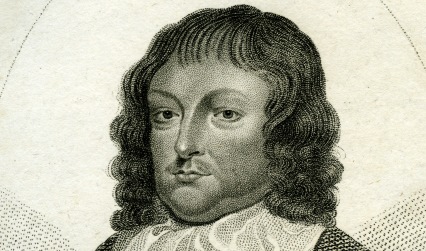
Dorchester was also keenly interested in mathematics; he built up a substantial library of books, and placed maths at its core. Of the 2,000 titles in the library, over 800 are in the section for mathematical words. The other three divisions – law, medicine, and ‘philology’ follow afterwards. A typical library of this era would have started with religious works, but for Dorchester these books were grouped together with history and literature in his ‘philology’ section.
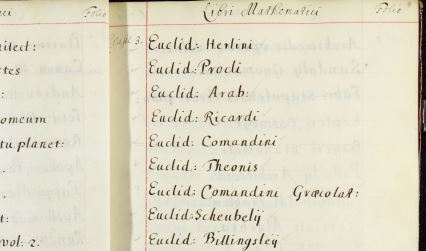
In the 17th century the subject of ‘mathematics’ included not only geometry and arithmetic, but also related fields including astronomy, astrology, architecture, music and military engineering. These topics and more are well represented in Dorchester’s library. The collection spans firework making and even dancing. One of the treasures of the modern RCP library is L’art et instruction de bien dancer, a unique surviving copy of a guide to French basse danse from the 1490s. Dorchester’s library also included Orchesographie, metode, et teorie en forme de discours et tablature pour apprendre a dancer by Tabourot (1597), another guide to French dance steps.
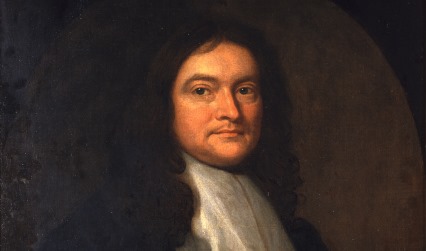
Whistler and Scarburgh
Other RCP fellows went beyond buying and (probably) reading mathematical books.
Unlike Harvey or Dorchester, Daniel Whistler (d.1684) is not honoured greatly in the history of the college. Whistler’s official biography in Munk’s Roll states that:
Dr. Whistler’s character will not bear examination; and it would have been well for the interests of the College had he not been admitted to some, at least, of the places of trust he was elected to fill.
Whistler was elected president of the RCP in 1683, but was considered not to have carried out his duties with sufficient diligence or probity. Medically, he’s best known for the first description of the disease rickets, in De morbo puerili Anglorum (‘the disease of English children’), published in 1684. However, earlier in his career, Whistler had shown expertise elsewhere: he was professor of geometry at Gresham College from 1648 to 1657.

Sir Charles Scarburgh (1614–1693), chief physician to Charles II and founding member of the Royal Society, wrote works on maths as well as about the muscles of the human body and about plague. The diarist John Evelyn reported that Scarburgh had an excellent collection of mathematical books.
Scarburgh collected and edited previously unpublished works of trigonometry by the English mathematician William Oughtred (1575–1660), printed as Opuscula mathematica hactenus inedita in 1677. Scarburgh also translated some of the Elements of geometry by the Greek mathematician, Euclid. Scarburgh’s translation was published from Scarburgh’s notes after his death, by his son.
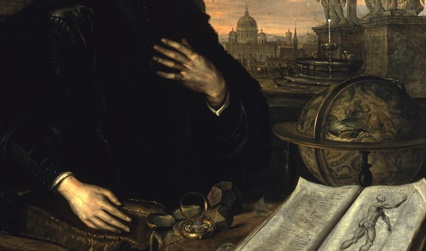
A portrait of Scarburgh hangs in the RCP Lasdun Hall. In this portrait, Scarburgh is shown with symbols of his expertise. On the table in front of him are a watch, two ‘Platonic’ solids (an icosahedron and a dodecahedron), a book of anatomy and a celestial globe. The background shows St Peter’s basilica in Rome. These features represent Scarburgh’s abilities in mechanics, mathematics, medicine, astronomy and astrology, and his knowledge of the classical learning of the ancient Greeks and Romans. All this features were expected from the most qualified physicians of the age.
Katie Birkwood, rare books and special collections librarian
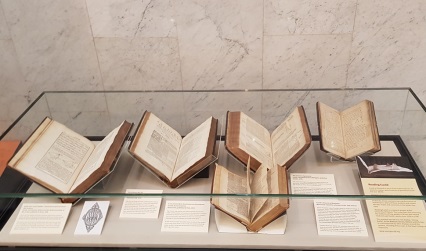
Until Friday 29 June, two display cases in the RCP Lasdun Hall will display mathematical works from the RCP library collections, as part of Seeing Euclid, a networked exhibition of Euclidean texts across the UK.
